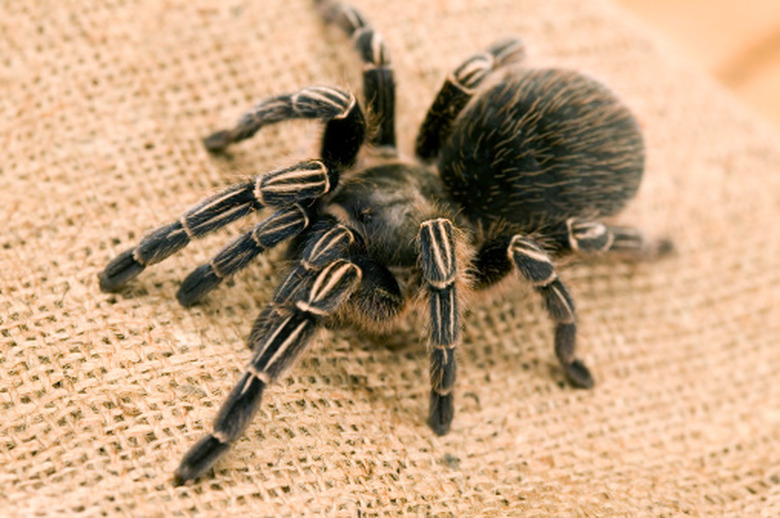How Tarantulas Adapt To Their Environment
Occurring worldwide in desert and tropical areas, tarantulas are large arachnids of the family Theraphosidae. With over 900 species, these hairy spiders have managed to adapt to climate extremes and variations in habitat ranging from arid locations with sparse vegetation to humid, tree-rich areas, and have developed specific defenses against local predators.
Tarantula Life Cycle
Tarantula Life Cycle
Tarantulas have found ways to survive in conditions ranging from arid deserts to moist rain forests. All tarantulas produce silk, but arboreal species occurring in tropical areas such as the Central and South American rain forests create a tube-like nest in trees, while burrowing species needing protection from the elements in harsher areas such as the desert Southwest use silk to fortify holes in the soil. Most species of tarantula eat insects and other arthropods, but some also consume larger prey such as lizards or birds. After hatching, tarantulas undergo several moults as they grow and may take up to 10 years to mature.
Obligate and Opportunistic Burrowing Tarantulas
Obligate and Opportunistic Burrowing Tarantulas
Some species of terrestrial tarantulas, particularly in harsher, drier climates, dig burrows for protection from predators. Called obligate burrowers, these species line the hole with silk, which both fortifies it against collapse and helps to keep it cooler and more humid than the surface. Other varieties are opportunistic burrowers, finding shelter from the elements in burrows and holes created by other creatures or in natural crevices and tree holes.
Arboreal Tarantulas
Arboreal Tarantulas
Arboreal, or tree-dwelling, tarantula species generally occur in more tropical areas, such as South America and parts of Africa, where trees grow tall. Arboreal species spin a tube-like nest of silk in tree branches. These tarantulas have adapted to living in trees by developing a lighter, thinner body than their terrestrial relatives, and have longer, more flexible legs for greater agility. Arboreal tarantulas may also live in low-lying vegetation such as bushes or tall grasses, but do not seek cover underground.
Hairs for Sensing and Defense
Hairs for Sensing and Defense
Although tarantulas have eyes, they depend largely on vibration and touch to find prey and keep safe. Tarantulas have developed highly sensitive setae (hairs or spines) on the legs and back which allow them to sense motion, vibrations and even scents. Some species have also developed urticating, or irritating, hairs on the belly. As a defense, these tarantulas kick the urticating hairs off in the face of a predator, where they irritate the eyes and mucous membranes.
